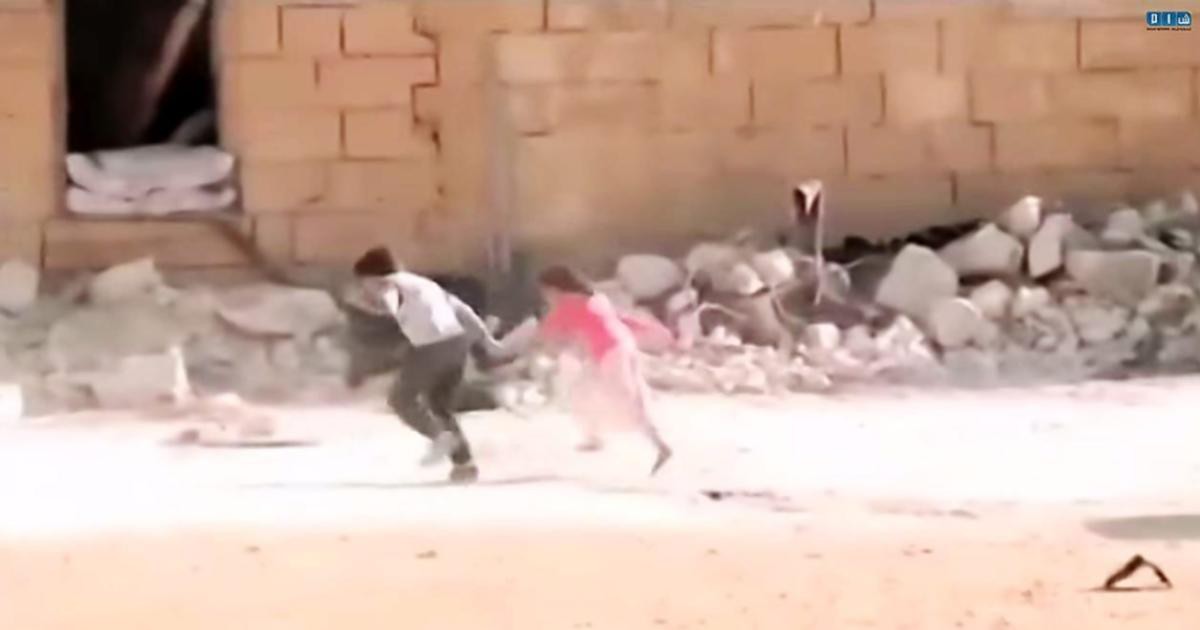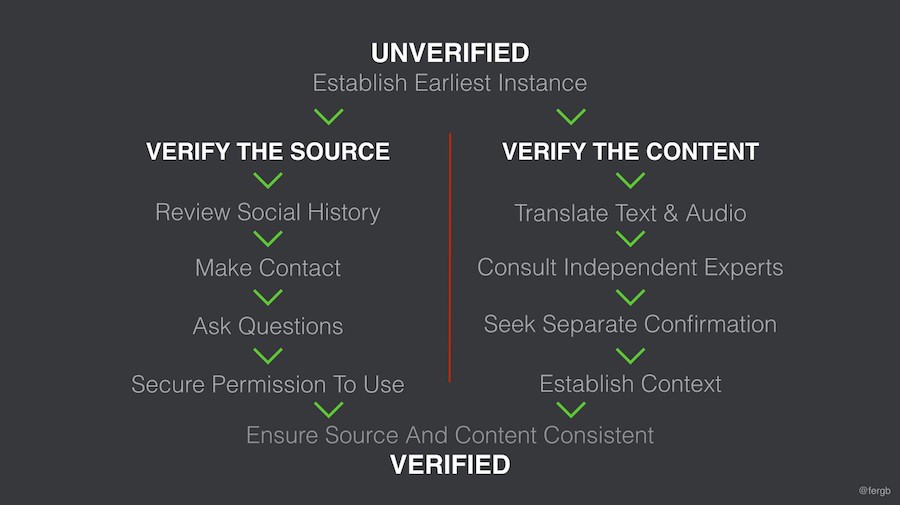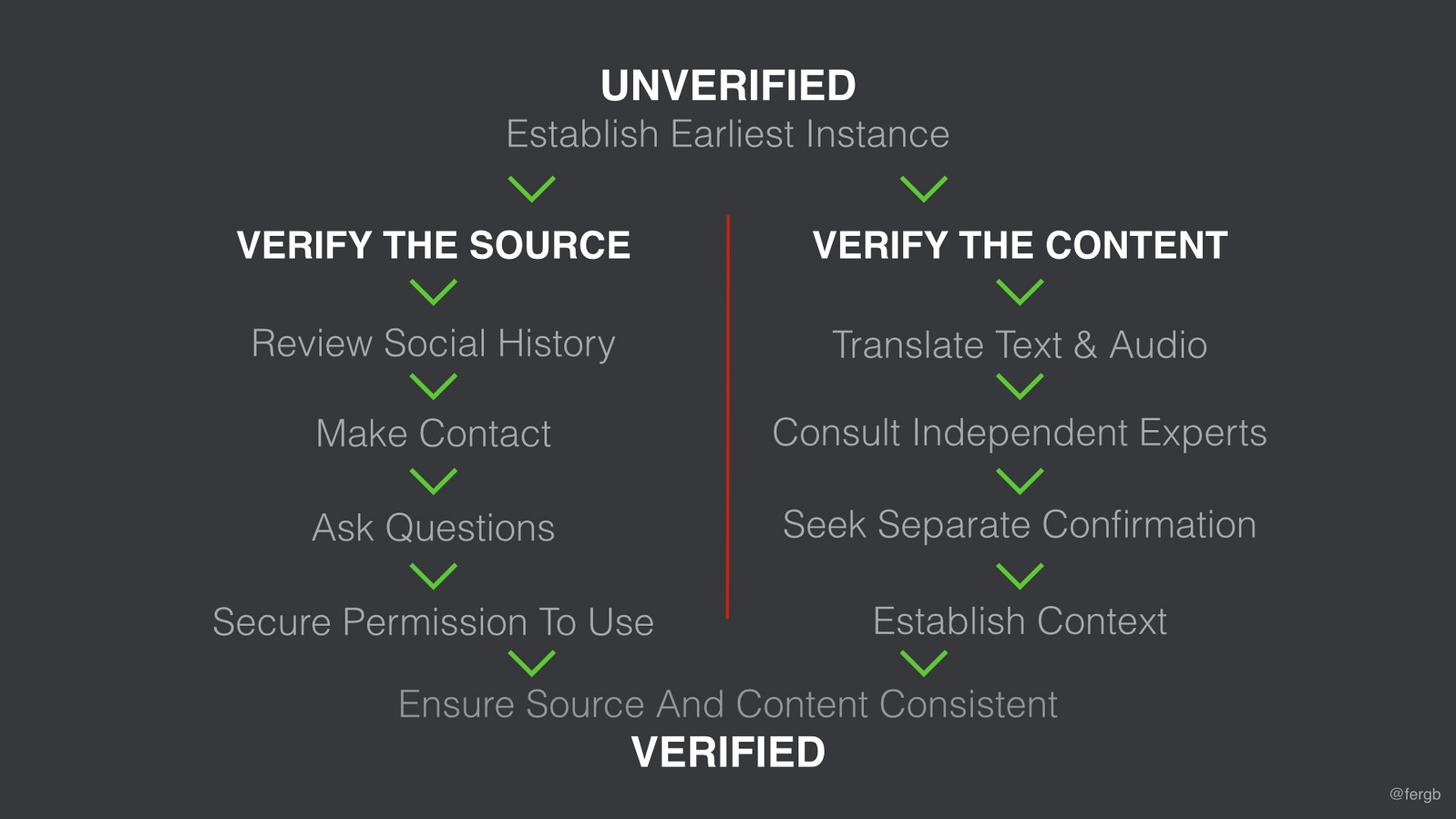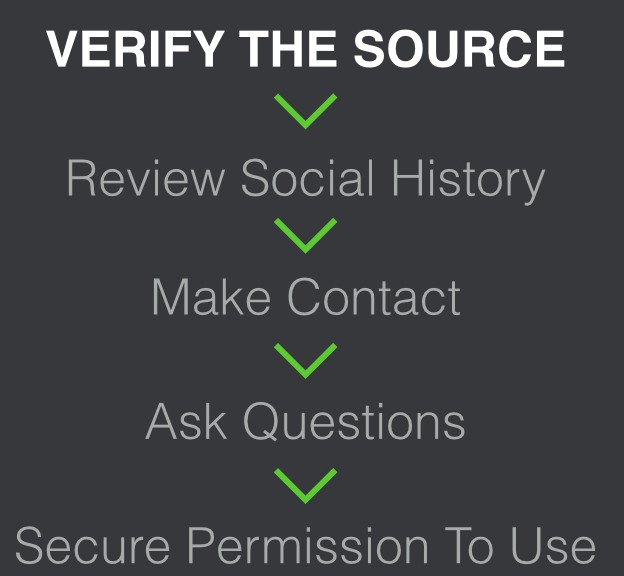It is easy to get caught up in the moment during a breaking news event. You stumble across some great content and you think you might be first because nobody else has run it yet. It is the first example of the video in your search results and the description gives you a lot of information. You might think you are good to go… but now is the time to stop and think.
The reason why we focus on additional verification is because eyewitness media is often accessed from just one source. No journalist should run something just based on one source.
What does a two track verification system look like?
My preferred method of verification is to separate the source from the content. Even if we trust that they were probably there and they probably caught it on camera, they still might not know what they actually witnessed.
We forget that being on the ground is very different to being in a newsroom where we are used to a constant flow of updating information. When it comes to eyewitness media or eyewitness accounts, I need to back that up with my own confirmation of events.
If you use this model for verification it ensures that you are using at least two sources to confirm what you are seeing in the eyewitness media. In other words you are not just taking their word for it.
Let’s break it down.
The source
Once you have found what you believe is the first instance of the user-generated content, you should then follow these steps for verifying that you are dealing with the original.
- Review social history
Look at what they have previously posted. Have they posted from that location before this current event happened? Are you able to place them at the scene, or at least determine the likelihood they could have been at the scene during the event? Also, remember to check across other networks not just the platform on which the piece of content appeared.
- Make contact
Pick up the phone! Take it off social if at all possible. You don’t necessarily want your competitors to see who you have found. If that isn’t an option then almost every platform has a function for private messaging.
- Ask questions
You can question the person about their experience. It shouldn’t surprise you to know that people who are not genuine are more reluctant to speak to you directly than those telling the truth.
Questions will not only help you determine the veracity of eyewitness media, they will also add value to the story. You should remember to ask the question that will make your editors proud: “Do you have any other photos or videos that you haven’t uploaded yet?”
- Secure permission to use
Regardless of your policy on permissions for embeds, broadcast or publication, requesting permission is a useful part of determining the original source. If people don’t have the right to let you use the content then they get pretty jumpy if you ask them formally.
The content
Now forget what the source has told you and follow these steps to examine what you see in the photo or video in closer detail. You want to independently confirm as many of the facts as possible. Try these steps:
- Translate or transcribe text and audio
In a photo this means looking at any signage or other wording that will help determine the time or location. For video, you are doing it for the same reasons but you are also checking that the information depicted in the video is consistent with the information you received from the source. This includes consistency with any captions or descriptions that accompany the upload on the respective platform.
- Consult independent experts
We all have amazing personal and professional networks these days giving us access to a wealth of information. An independent expert could simply be a colleague or trusted figure who has been to the location you are analysing or just someone who has more than the average knowledge about a specific topic. In short, find a person who has knowledge that they can share.
- Seek separate confirmation
Were there other eyewitnesses unconnected to the source of this specific content that can confirm the same events verbally or by their own contributions? Did you have your own reporter or someone you trust on the scene? Would the local authorities have been aware of the event and is it appropriate to seek confirmation from them?
- Establish context
Are you able to establish the bigger picture or are you viewing this through tunnel vision? If you can’t find enough information to report the actual story then consider holding back until it becomes clear.
Verified
If you ever get stuck or are required to take a leap of faith as you work through these two separate tracks it is might be a strong indication that something is wrong with the content or source. To publish UGC with confidence then these two processes should lead to the same result every time.

Screenshot of the “Syria Hero Boy” video purporting to show children under sniper fire in Syria but was actually filmed by Norwegian filmmakers in Malta with the intention of it being presented as real.






